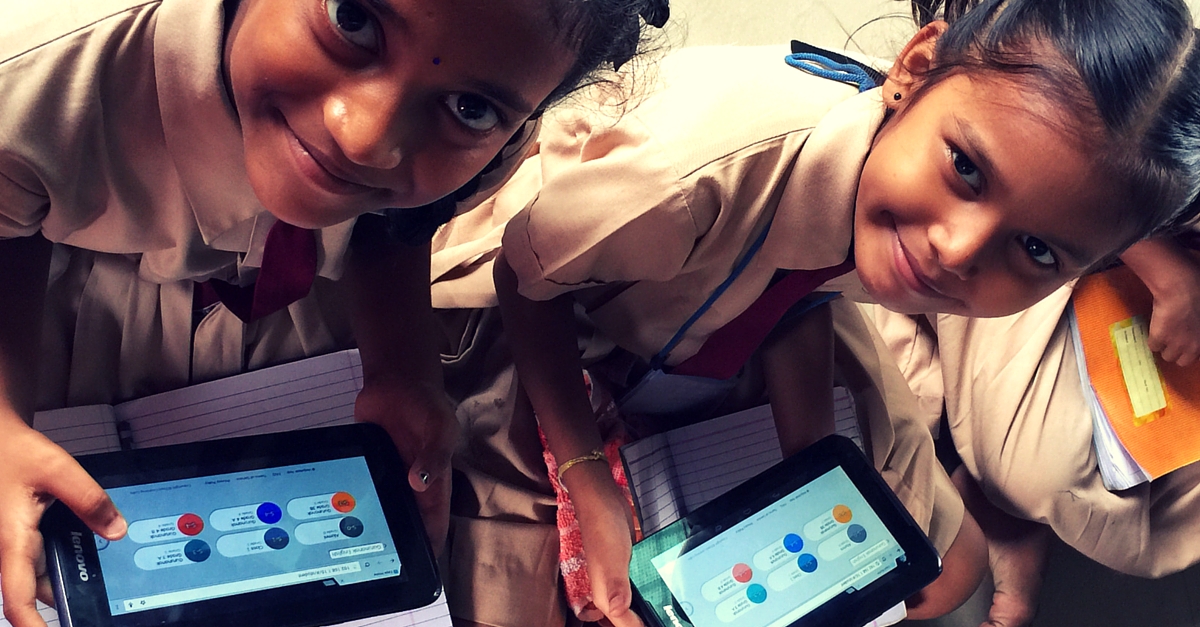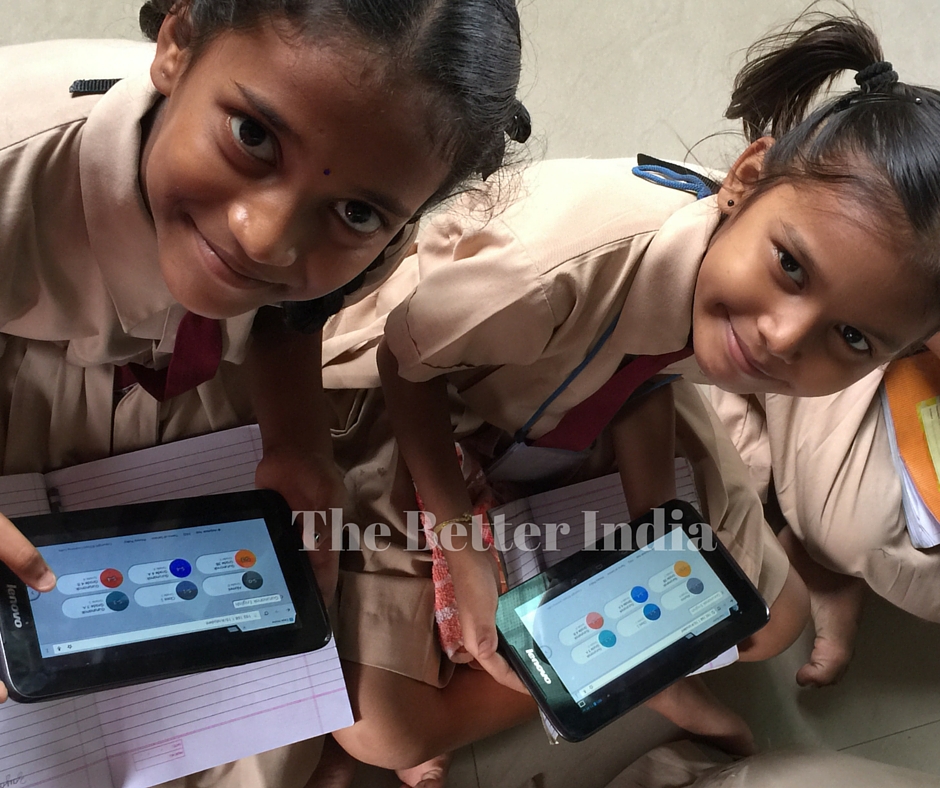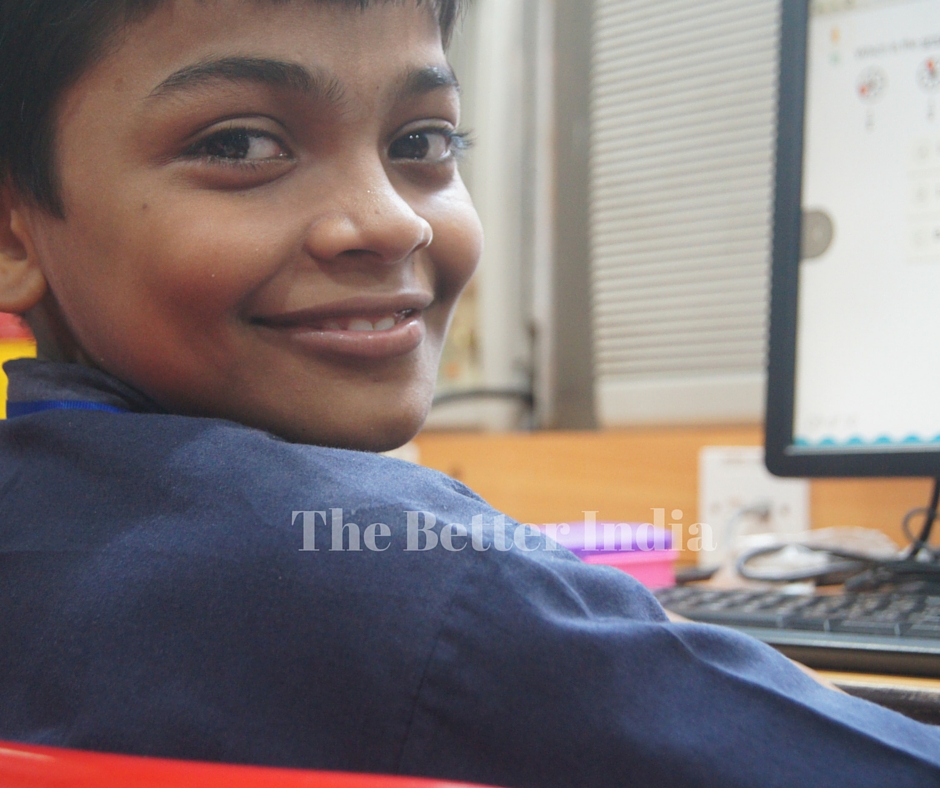No Electricity? No Teachers? No Problem. Students in India’s Slums Are Learning from the Internet.
An interesting technology is bridging the education gap in slums and in rural India. Through computer tablets and CLassCloud technology, children get access to quality education even in locations where electricity and network connectivity are an issue.

An interesting technology is bridging the education gap in urban slums and in rural India. Through computer tablets and ClassCloud technology, children are getting access to quality education even in locations where electricity and network connectivity are an issue. Learn more about it here.
Schools in Malwani, a slum in the suburbs of Mumbai, faced the usual struggles like lack of facilities and low interest in education among the children. In addition, the schools faced difficulties in retaining teachers, who would often teach just for a few months and then quit abruptly.
In a poor teaching environment like this, where regular electricity itself is a challenge, introducing a new digital innovation sounds like a far-fetched idea.
But one intervention is changing the face of schools in slums and rural schools in India. Introducing Zaya Learning Lab, a social enterprise that is bridging the education gap by bringing world class learning resources to marginalized communities.
Founded by Neil D’souza and Soma Vajpayee in 2013, Zaya already serves over 100 schools and 20,000 children.

Before starting Zaya, Neil took a few years off from his work helping orphanages in Mongolia, where he had discovered a huge gap in the education system. He knew there was quality digital content online but not everyone could access it. He set out to design an intervention that could bridge this gap. He met Soma, an ex-banker, who was also extremely passionate about using technology in the classroom. Together, they founded Zaya Learning Labs.
“I visited a lot of offline schools and saw a real need for connectivity. A lot of great educational content exists online but these kids did not have access to it due to lack of internet, intermittent electricity, unmotivated instructors, or some combination thereof. We came up with an idea that would help overcome the infrastructural issues in these schools,” says Neil.
They designed the ClassCloud, which gives teachers and students better tools for teaching and learning. A ClassCloud is a small, battery-powered device that creates a powerful local hotspot in offline learning centres or schools.
Specific content is pre-loaded on the Zaya Micro Cloud, which runs on battery for about 10 hours and does not require electricity.
The Micro Cloud is like a wifi router that can be carried anywhere. It is supported by low cost hand-held tablets, on which students can access content. About 60 students can connect to the wifi device at a time.

The content uploaded on the Cloud is as per the prescribed syllabus by the state. The students’ time is split between three distinct forms of learning in the class. After the regular instruction and lesson by the teacher, each student is given a tablet to understand and learn the lesson at his/her own pace.
The lessons are designed as per the needs of individual students and also focus on their personal interests. This is followed by a small test at the end of the class to get a clear understanding of the learning level of each student. When the students take the assessment tests, student-level and class-level reports are generated for teachers and parents.
“Not every student in the class has the same learning level. Some might pick up things fast and some may not. Also, every student has different interests. We have tried to personalize the learning experience for every kid,” says Neil.
Each student is asked to create a profile on the Cloud and personalized lessons are loaded on the tablet once he/she logs in.

The lessons are engaging and interactive and are delivered in an entertaining way. Students get an opportunity to watch videos, play games and take quizzes on their tablets. And since these tablets do not require electricity or Internet connection, the model can work even in those schools that do not have a good power supply.
The Zaya team also found that the State Board syllabus was well beyond the capability of many of these students and the lessons, both in class and on the platform, were too advanced for them. The team decided to take remedial measures to help the classes catch up to their grade levels.
“The students were given lessons on the Zaya platform but using content from other content partners. Students were given individualized playlists, starting from the most basic skills, allowing them to learn at their own pace and focus on their own needs. Using this method, even for only an hour a week in most cases, the students were able to make noticeable and significant progress towards reaching their grade levels. The students’ progress, though modest, represents an enormous step in the right direction and was achieved in only a few months of using the platform,” says Neil.
Thanks to Zaya’s interventions, the schools have seen a remarkable improvement in the learning levels of the students.

“Zaya conducts a BOY (Beginning of the Year) and EOY (End of the Year) test. BOY is a test taken before implementing Zaya. This helps us understand the current learning level of the students. Then we implement Zaya and conduct an EOY to understand how much Zaya has helped students learn. From these tests we have seen an increase in learning outcomes. The children’s core concepts have also been strengthened. Also, analytics on Zaya’s platform help teachers identify students who have not fully understood concepts or chapters; teachers can then focus on those students,” adds Neil.
The ClassCloud, which costs around Rs. 5,000, is purchased by the school. Zaya then charges Rs. 50 per child per month from the school for their services and devices.
“We only reach out to those schools that are genuinely interested in the technology. It is small victories that matter to us. For example, one of our students in Rajajinagar came 2nd in class after learning on the Zaya platform (he was 17th when the school year began),” says Neil.
This interesting technology, which is of benefit to both students and teachers, deserves to be used more widely, especially in schools that do not have a good power supply. It will help schools that have not yet been able to harness the power of technology experience a whole new world.
For more information about Zaya Learning Lab, visit their website.
Like this story? Or have something to share? Write to us: [email protected], or connect with us on Facebook and Twitter (@thebetterindia).
This story made me
- 97
- 121
- 89
- 167
Tell Us More
We bring stories straight from the heart of India, to inspire millions and create a wave of impact. Our positive movement is growing bigger everyday, and we would love for you to join it.
Please contribute whatever you can, every little penny helps our team in bringing you more stories that support dreams and spread hope.



















